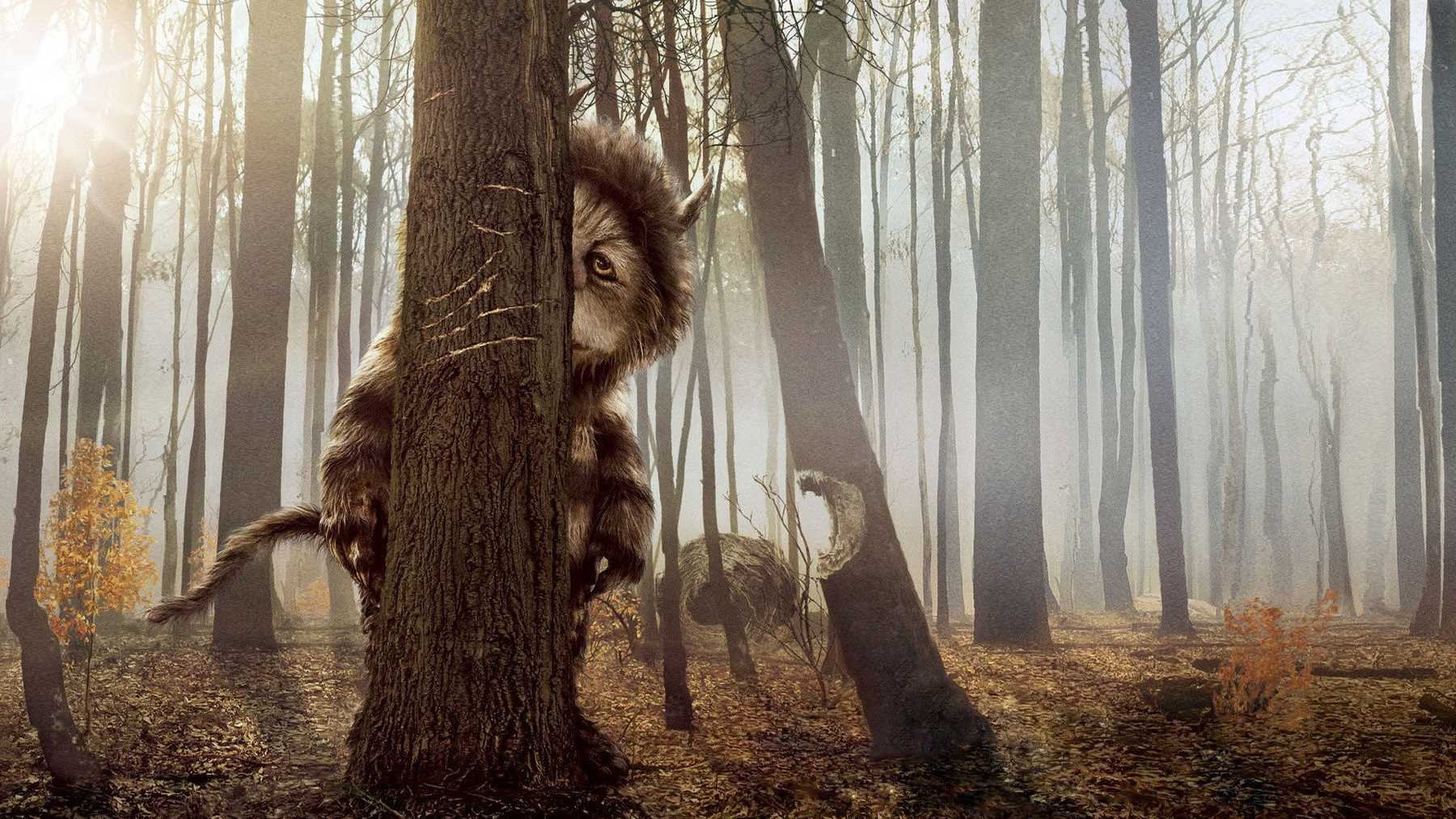A captivating cinematic adaptation of Maurice Sendak’s beloved children’s book, Where the Wild Things Are invites viewers into the imaginative realm of Max, a young boy grappling with feelings of isolation and misunderstanding. This visually stunning film transcends the typical children’s movie, delving into complex emotional landscapes within Max’s inner world, manifested as the land where the wild things are. But beyond the poignant narrative and fantastical creatures, a question often arises for film enthusiasts: where was Where the Wild Things Are filmed? The answer lies in a blend of real-world locations and masterful set design, contributing significantly to the film’s unique and immersive atmosphere.
While the wild things themselves are creatures of imagination and CGI, the landscapes they inhabit are grounded in reality, albeit beautifully stylized. Principal photography for Where the Wild Things Are primarily took place in Australia. The sun-drenched, rugged terrains of locations across Victoria, Australia, provided the perfect backdrop for the untamed wilderness of Max’s fantasy island. Specific locations like Cape Otway, with its dramatic coastal scenery, and areas within Melbourne and its surroundings, were utilized to bring the wild world to life. These Australian landscapes lent a tangible sense of scale and authenticity to the fantastical setting, contrasting beautifully with the whimsical nature of the wild things.
The filmmakers, under the direction of Spike Jonze, opted for a unique approach, blending practical sets with CGI to create a world that felt both real and dreamlike. Large-scale sets were constructed in studios and on location in Australia, allowing the actors, particularly Max Records who played Max, to physically interact with their environment. This commitment to practical filmmaking, combined with cutting-edge visual effects, is a key reason why Where the Wild Things Are feels so emotionally resonant and visually arresting. The texture of the environments, from the sandy beaches to the towering trees (both real and constructed), enhances the sense of immersion, drawing the audience into Max’s emotional journey.
Delving Deeper: Film Analysis of “Where the Wild Things Are”
Beyond the captivating filming locations, Where the Wild Things Are is a film ripe for analysis. It’s a journey into the complexities of childhood emotions, family dynamics, and the struggle to understand the adult world. The film uses the fantasy land of the wild things as a metaphor for Max’s internal struggles, making it a deeply resonant experience for adult viewers while still retaining a sense of wonder for younger audiences.
Max’s Family Dynamics and the Character of KW
One of the most compelling relationships within the film is between Max and KW, one of the wild things. KW can be interpreted as a representation of Max’s mother, and their interactions mirror Max’s challenges in understanding and connecting with his mother’s world. In a poignant scene, KW returns after spending time with Bob and Terry, two owl characters, echoing Max’s feeling of his mother being preoccupied with her friends.
Max poignantly asks KW: “How do I make everyone okay?”
This simple yet profound question encapsulates Max’s yearning to resolve the complexities he perceives in the adult world. KW’s companions, Bob and Terry, respond with unintelligible squawks, symbolizing the “adult language” that often leaves children feeling excluded and confused. Max, unable to decipher their meaning, remains distanced from the adult concerns that subtly shape his world.
When KW casually suggests Bob and Terry can join their group, Max’s immediate concern is for Carol, the most volatile and emotionally complex wild thing.
Max questions: “What about Carol?”
Carol embodies Max’s own inner turmoil, his feelings of anger, isolation, and the need for acknowledgement. By asking about Carol, Max is, in essence, asking about himself. KW’s assurance that she can care for Bob and Terry while still valuing Max parallels a mother’s attempt to balance her own life with her child’s needs. However, this reassurance doesn’t fully alleviate Max’s underlying feeling of being secondary, of being left behind in favor of other priorities. This scene poignantly reflects the sensitive perspective of a child navigating intricate family dynamics, a theme beautifully captured through nuanced scripting and delicate cinematography.
The Monster Pile and the Dying Sun Metaphor
Another striking moment in Where the Wild Things Are is the “monster pile.” Initially, it mirrors Max’s earlier experience of being trapped in his snow fort, but this time, instead of fear, he finds comfort within the collective embrace of the wild things. Later, as Carol’s inner turmoil intensifies, Max becomes fearful of Carol – and by extension, his own volatile emotions. He attempts to build a secret room, a symbolic effort to compartmentalize and shut away the parts of himself he finds overwhelming. In a powerful exchange, Carol articulates a fear that resonates deeply:
Carol laments: “I thought we were all going to sleep in a big pile but now you want a secret room and the sun is going to die.”
This quote encapsulates a central theme of the film: the ephemeral nature of joy and connection. The “dying sun” metaphorically represents the fear of fading hope and happiness. The “monster pile,” symbolizing familial unity and belonging, is contrasted with the isolating “secret room,” reflecting Max’s fear of emotional fragmentation. Just as Max perceives his family drifting apart, he fears the disintegration of this newfound unity, retreating into emotional isolation to cope with overwhelming feelings. Carol’s words reveal the core of Max’s anxieties, highlighting his deep-seated fear of loss and emotional disconnection.
The King’s Meaning and the Acceptance of Imperfection
Max’s role as “king” of the wild things is a critical element in understanding his inner journey. Initially, Max embraces this role as a means of establishing control in a world where he feels powerless. This desire for control subtly echoes the globe in Max’s room, inscribed with his father’s aspiration to be “owner of the world.” Like many children, Max initially believes in his capacity to shape his world, to realize his aspirations. However, as he navigates the complex emotional landscape of the wild things – mirroring the complexities of the adults in his life – he begins to understand the limitations of control. He learns that being king, in reality, is often devoid of true power, and that some situations are simply beyond his ability to fix.
When Carol’s anger erupts, leading to a loss of control, a poignant moment of understanding unfolds between Max and KW, mirroring the unspoken emotions between Max and his mother. Filmed with remarkable sensitivity, their exchange reveals the unspoken burdens they carry:
Max observes: “He doesn’t mean to be that way KW… he’s just scared.”
KW responds with weary honesty: “He just makes it hard. And it’s hard enough already.”
Max, with childlike faith, asserts: “But he loves you. You’re his family.”
KW concludes with a sigh: “Yeah… it’s hard being a family.”
This dialogue hangs in the air as the final scene unfolds, where Max’s mother embraces him upon his return. Words become secondary to the raw emotion conveyed through their expressions, underscored by the lingering echoes of the wild things’ world. It’s a quiet acceptance that life, like families, is inherently imperfect, a blend of chaos and love, acceptance and struggle.
Where the Wild Things Are stands as a truly unique cinematic experience, inviting multifaceted interpretations and profound reflection. Its depth may be challenging for some, but for those willing to delve into its layers of meaning, the film offers a powerful exploration of childhood psychology and the universal experience of navigating “wild things” both within and around us. The masterful blend of real filming locations in Australia and imaginative set design, combined with its poignant narrative, creates a film that is as visually stunning as it is emotionally resonant. Ultimately, Where the Wild Things Are reminds us that finding our way home often involves confronting and embracing the wildness within.
 A still from the movie 'Where the Wild Things Are' showing Max standing with several of the large, furry Wild Things in a sandy, windswept landscape.
A still from the movie 'Where the Wild Things Are' showing Max standing with several of the large, furry Wild Things in a sandy, windswept landscape.
Have you journeyed to where the wild things are? Share your thoughts on the film in the comments below.

